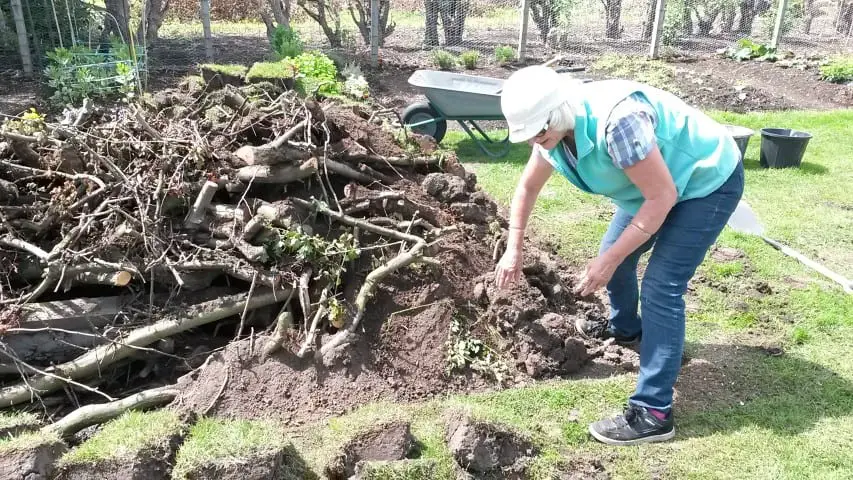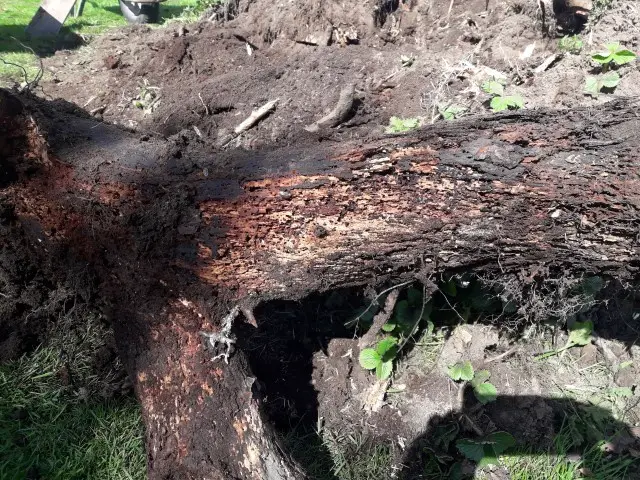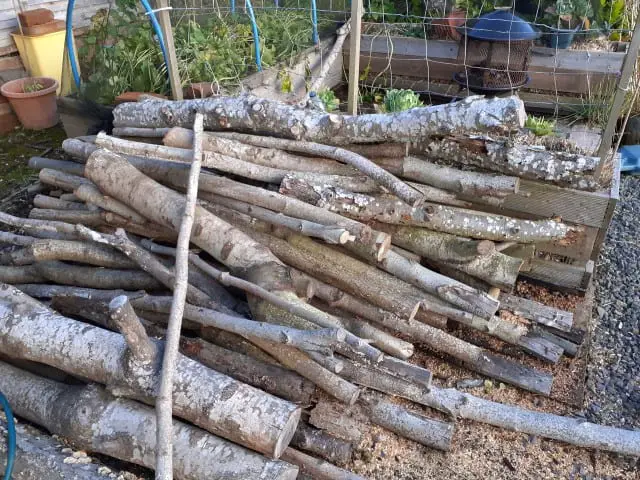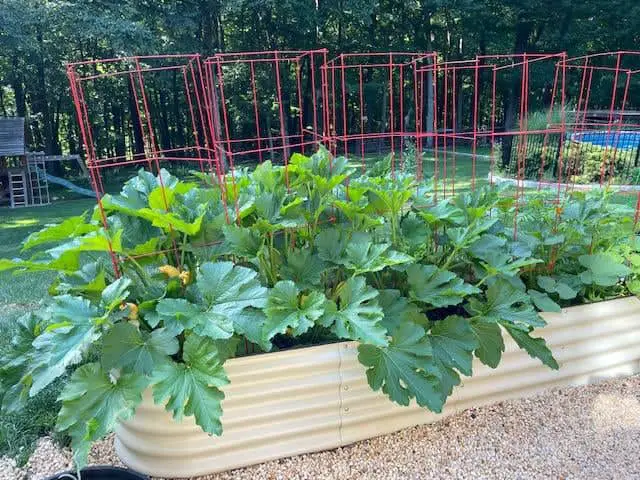
One of several no-dig gardening methods, the Hugelkultur or Hugelbed, is a vegetable growing technique originating from the Black forest region of Germany, where forest debris was plentiful but good growing soil scarce.
This led to the locals developing a method of creating a quality soil from the abundance of broken trees, branches, fallen leaves that were freely at their disposal.
The way that the Hugelkultur (German for ‘hill or mound culture’) works is simple but effective.
Old timbers and other forest debris are gathered together into a mound. To this is added green organic material such as grass clippings or cut weeds, kitchen green scraps etc.
This creates the mix of ‘brown’ and ‘green’ material that is needed to create good compost – which is what the Hugelkultur will become over time. This mix is covered over with topsoil and planted over with vegetables or other plants.
The large branches or trees which form the core of the Hugelkultur slowly degrade as fungus and micro-organisms start to break down the large logs turning them effectively into sponges able to absorb and retain moisture to feed the plants.
Snippet: A hugelkultur works by organically breaking down timbers that have been heaped up and covered with organic material, then topped off with a 6 inch covering of topsoil. Into this topsoil plants or vegetables are grown that thrive on the conditions created by the composting timbers and ‘green’ material.
For all the reasons stated above a Hugelkultur or ‘Hugelbed’ has gained a reputation as being self-irrigating after a couple of years in use, as the heavy timbers become sponge-like and absorbe moisture from the surrounding environment..

Building a Hugelkultur bed
Now that we have seen how a hugelkultur works, we can have a look at how to build it.
The basic plan for building a Hugelbed is simplicity itself, and for the most part described in the earlier chapter. However just to be a little more detailed here are the steps to creating your own hugelkultur bed.
- Locate your area: A swale or natural dip in the ground is a good place to put your Hugelkultur if you happen to have such a location. If not then any area where there is plenty sunlight and you can get access all around the Hugelkultur when it is built.
- Gather Materials: You are trying to create a mound about 4 foot high by at least 10 foot long and 6 foot wide. For this you will need a collection of heavy timbers/tree trunks for the center, surrounded by lesser tree branches and eventually twigs, grass clippings and other green material.
- Assemble the Hugelkultur: Once you have chosen and prepared your area by turfing the grass if need be (lay the turf to one side). Simply place the heaviest of the trees to the center and surround by the smaller branches and twigs. Pack in the gaps with leaf debris and tiny twigs mixed with the grass clippings and green material until there are little or no gaps left. If you have turf put aside, then this is the point where you will place the turf green side down over the mound. Cover the whole with a 2-3 inch layer of good topsoil.
What kind of wood is used for a Hugelkultur
Basically you do not want to choose trees that are naturally rot-resistant or anti-microbial. So trees like Aspen, Birch, Apple or other fruit trees, Maple, Pine, Willow, Poplar, Sycamore and Oak, and most soft wood species are all good trees for a Hugelkultur.
Allopathic or rot resistant trees to avoid, or at least put deep inside the mound would be Yew, Cedar, Juniper, Black walnut, Black locust, Red Oak.
Also any old lumber that you have lying around can be gathered up and used in the Hugelbed – this is a great example of re-purposing!

How long before you can plant out the Hugelkultur
Whilst it is a good idea to wait for several months before planting in a newly built Hugelkultur, for the impatient, it can be planted out immediately if you have put enough topsoil on the covering – at least 3 inches.
This topsoil will nourish shallow rooted plants until nature can really start its work decomposing the materials below.
This is one of the reasons why it is best to build a Hugelkultur late Autumn in order to give it time to settle and start composting before the planting season begins in the Spring.
Another good reason to begin construction in the Autumn is that this is when most material will be freely available, with all the produce of the winter fall landing at your feet ready for the Hugelbed!

How long will a Hugelkultur last?
The lifespan of the mound depends very much on the amount of material that you have used in the build. Heavy thick trunks take a good few years to break down into compost and will retain their bulk for many years.
This means that if you build a decent sized mound then it should last around 10 years or so, until it eventually just collapses down to ground level where you can still plant on it!
If you build your Hugelbed into a raised bed system – in other words enclose it in a wooden box or frame – then you just keep adding on top as the bed itself collapses down.
In fact an excellent way to take up space on a deep Raised Bed is to pack the first half or so with the same material you would use in a Hugelbed. This is much cheaper than filling deep with compost, and the rotting timber will effectively turn to compost over time.
Summary
So if I had a simple sentence to explain how a Hugelkultur works it would be this.
A Hugelkultur works by converting old timbers and forest debris into usable compost, into which you can plant vegetables and other plants.
You might also like…Building A Raised Bed Garden




